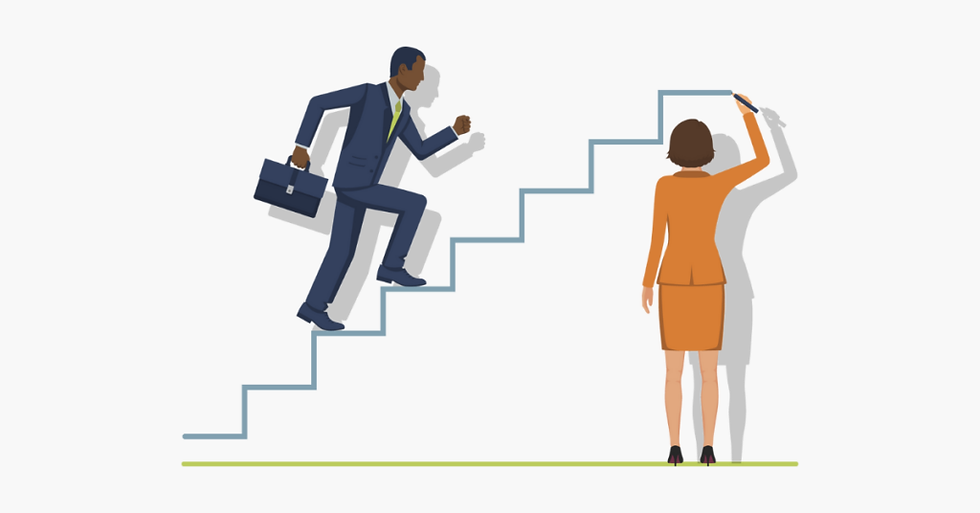Your Quick Guide to Donor-Advised Funds
- Kyle Halmrast

- May 21, 2018
- 3 min read
This article was written by Kari Dasher. She is no longer with Ostara, but we want to preserve this piece so that you can learn from her and from the work she did while part of the Ostara team.
What do you know about the hottest thing to hit giving since the internet? Chances are donors are already asking you about donor-advised funds (DAFs). According to Giving USA 2017: The Annual Report on Charitable Giving, contributions to DAFs almost tripled the overall charitable growth rate in 2016 (up 7.6 percent to $23.27 billion). As the new tax law rolls out this year, I expect the interest in DAFs to grow as people rethink their giving strategies.
I regularly hear questions about how to tap into DAF dollars for annual and campaign fundraising. My response is always to educate yourself and prepare your organization first. When donors choose the DAF route, you go on a journey with them through tax and accounting land. This is why you became a fundraiser, right?
We know you don’t have extra hours in the day to pore over trend reports, tax laws, and accounting, rules, so we did your DAF research for you. Here’s your quick guide to DAFs for when you have a donor on the line or a question in your inbox.
What is a donor-advised fund (DAF)?
Think of a DAF like a charitable-savings account established under the tax umbrella of a public charity (community foundations or philanthropic arms of financial institutions). Donors can contribute to the fund as often as they want and receive immediate, maximum tax deduction. The donor then becomes the donor-advisor and recommends to the organization managing the DAF which organizations should receive the funds. The organization is not obligated to follow the donor’s advice (although, they most often do).
Why do donors choose DAFs?
Simplicity: It’s like having a family foundation that handles all record-keeping, disbursements, and tax receipts. Unlike a foundation, there are no start-up costs (although there is often a minimum initial charitable contribution to establish the DAF).
Flexibility: You can give and receive the tax benefit today even if you don’t know what organization you ultimately want the gift to benefit.
Efficiency: There are no transaction fees, so 100 percent of the gift benefits the nonprofit. The gift is tax-deductible and investment growth in the DAF is tax-free.
Privacy: If you don’t want your giving to be public or known to the organization, it’s a good way to stay anonymous.
(Source: Pacific Northwest Ballet)
What are the challenges with DAFs?
Relationships: Counter to the core of fundraising, DAFs can make it difficult to build long-term relationships with donors when anonymous checks arrive (although this is still a happy day).
Disbursements: Unlike foundations, there’s no obligation for the sponsoring institution to distribute any of the money from DAFs to nonprofits. Technically, those funds could sit there forever. Academics have analyzed IRS tax data and found that 25 percent of DAF sponsors distributed less than one percent of their assets in a year. That’s a lot of unrealized potential for our nonprofit missions.
Why do I need to know about the Pension Protection Act (PPA) of 2006?
The PPA (The Pension Protection Act of 2006) stated that the donor-advisor cannot receive more than “incidental benefit” from the recommended grant to the charity. What’s an incidental benefit? If you had given the gift directly to the nonprofit and the benefits would have changed the value of the tax deduction, then it’s off limits. This means if I recommend funds from my DAF benefit the ballet, I cannot receive season tickets to the ballet in exchange for the DAF funds. The donor-advisor can still receive benefits that have no fair market value (like a high-five or a thank you card).
How does the Tax Cuts and Jobs Act of 2017 affect DAFs?
The new tax law includes higher standard deductions, meaning fewer taxpayers are likely to itemize their 2018 taxes. While we know most donors are not primarily motivated to give because of taxes, some people will lose the tax benefits associated with charitable giving without itemized deductions. I expect people will give, but they may not give as much. Some donors may start lumping gifts (giving more in one year and less in another to surpass the charitable deduction). During “lumping” years, donors may park their funds in their DAF for future use. Donors get immediate tax benefit, but the benefit to nonprofits may not be realized for years.
Want to dig deeper into donor-advised funds? Join Kari’s session about the Opportunities and Challenges of Donor-Advised Funds at the AFP Advancement Northwest Forum on June 7. In the meantime, let’s keep this conversation going. We are here to connect.



